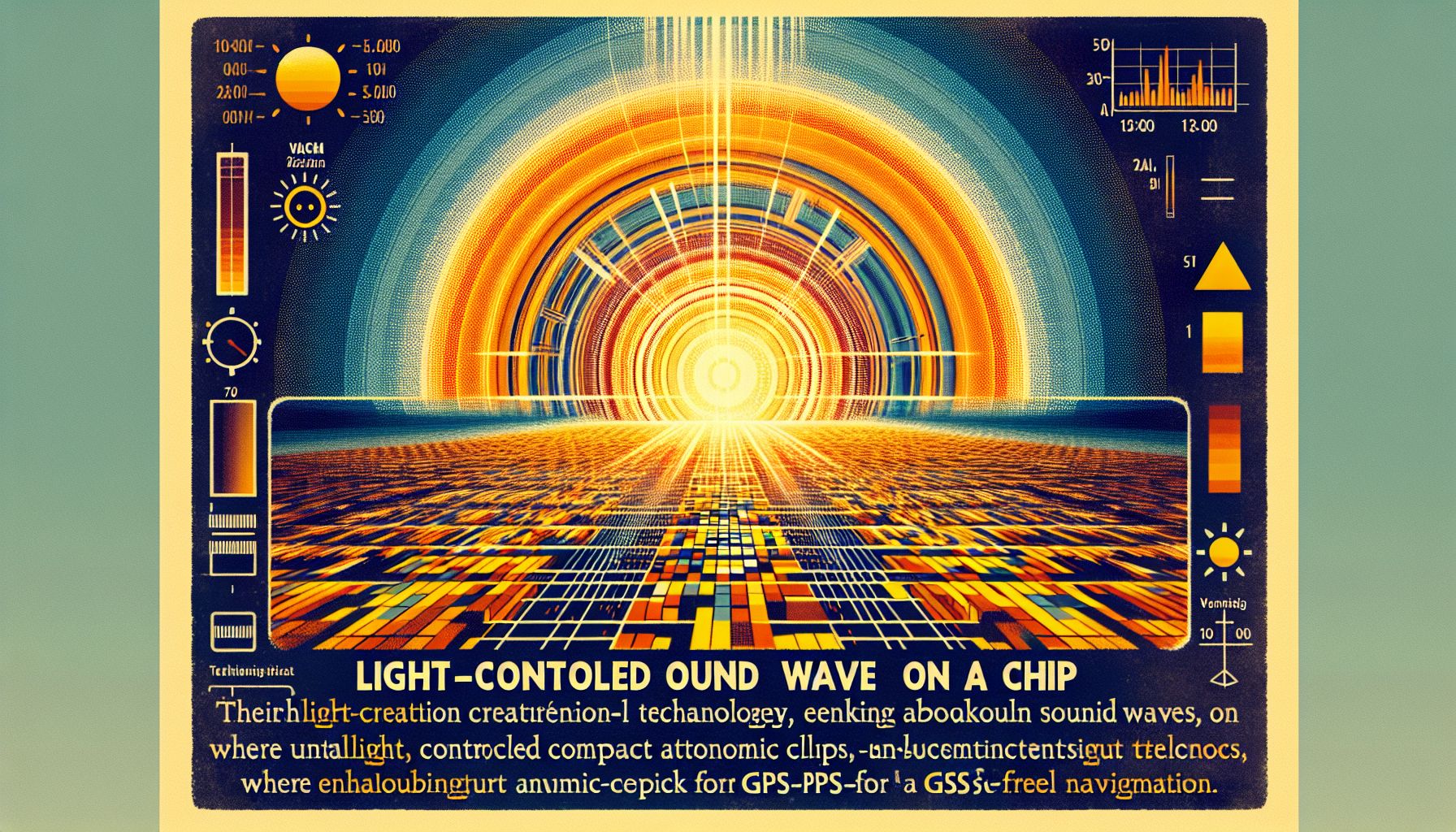Light-Controlled Sound Waves on Chips Revolutionize Navigation Technologies

Enschede, Friday, 2 May 2025.
University of Twente researchers have unlocked new potential for integrated photonics by using light to control sound waves on a chip, enabling GPS-free navigation with miniaturized atomic clocks.
Breakthrough in Integrated Photonics
In a groundbreaking development published on April 30, 2025, researchers at the University of Twente have achieved a significant advancement in photonics technology. The team, led by David Marpaung, has successfully developed a method to control sound waves using light on specialized chips [1][2]. This innovation represents a crucial step forward in integrated photonics, a field that combines light-based technology with traditional semiconductor manufacturing [3].
Technical Innovation and Implementation
The technology leverages Stimulated Brillouin Scattering (SBS) and employs thin-film lithium niobate (TFLN) to precisely steer acoustic waves [2]. This breakthrough addresses previous scalability challenges that have limited practical applications of SBS technology. In collaboration with Cheng Wang’s group from the City University of Hong Kong, the team has successfully created an on-chip Brillouin amplifier and laser, alongside a multifunctional Brillouin microwave photonic processor [2].
Revolutionary Applications in Navigation
The most significant immediate application of this technology lies in its potential to revolutionize navigation systems. The innovation enables the miniaturization of atomic clocks, making them small enough to be integrated into satellites and drones [1]. As explained by Professor Marpaung, ‘SBS can drastically reduce the dimensions of atomic clocks, since SBS allows for miniaturization of the ultra-precise and stable lasers required by these devices’ [2]. This advancement could enable autonomous navigation without reliance on GPS systems [1].
Future Commercial Prospects
The commercial implications of this technology are substantial. The research team has successfully transformed the technology from laboratory concept to fabrication-ready status [2]. The innovation is particularly relevant for future communication systems, with potential applications in 6G radio systems and enhanced navigation technologies [2]. The development represents what Marpaung describes as ‘very fertile ground, both scientifically and commercially’ [2], marking a significant transition from theoretical research to practical application.

